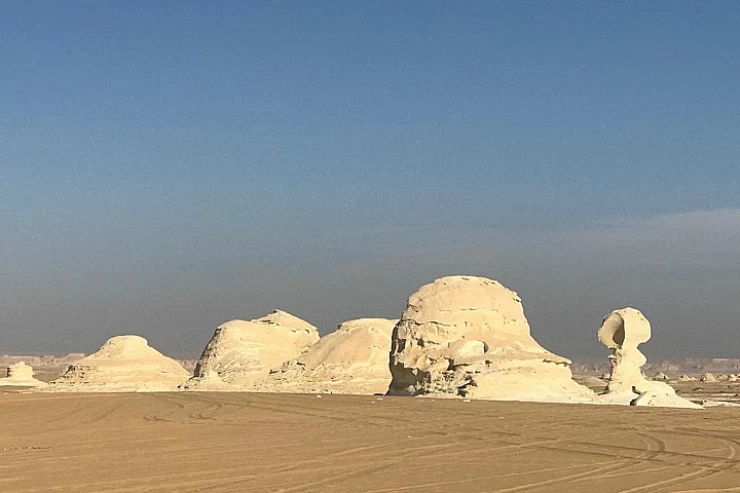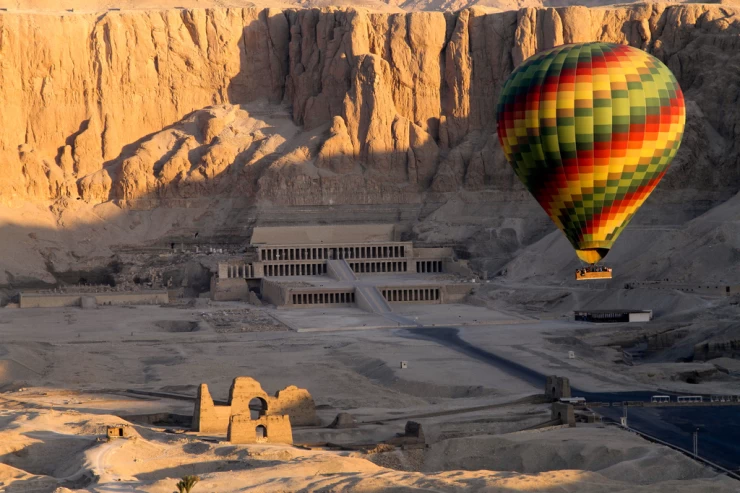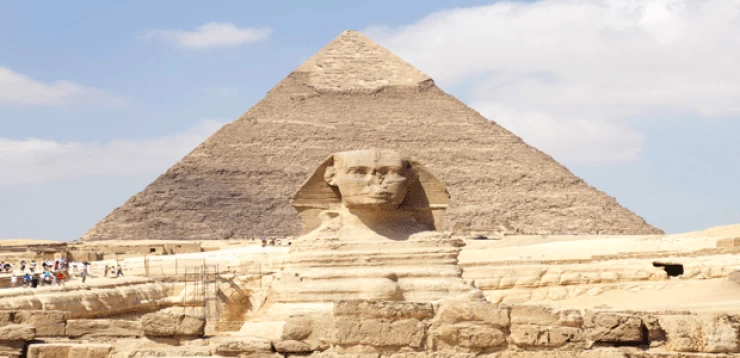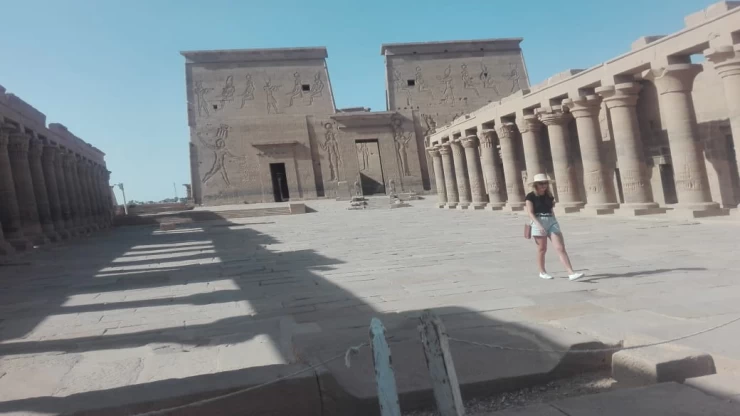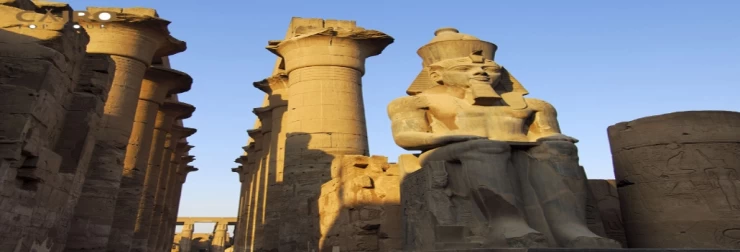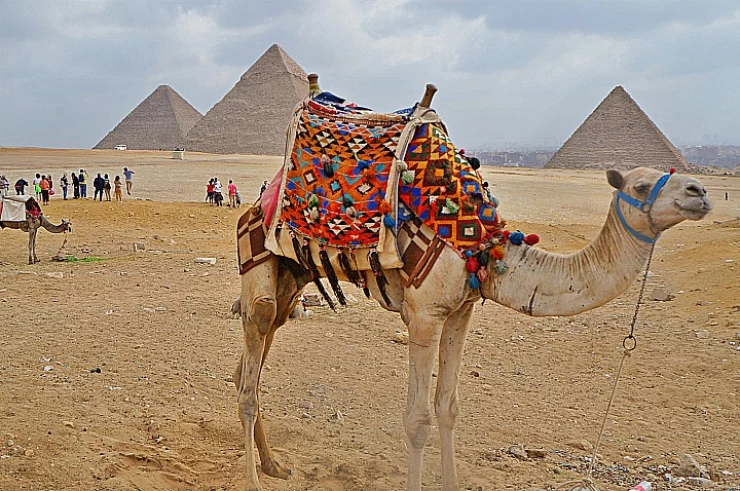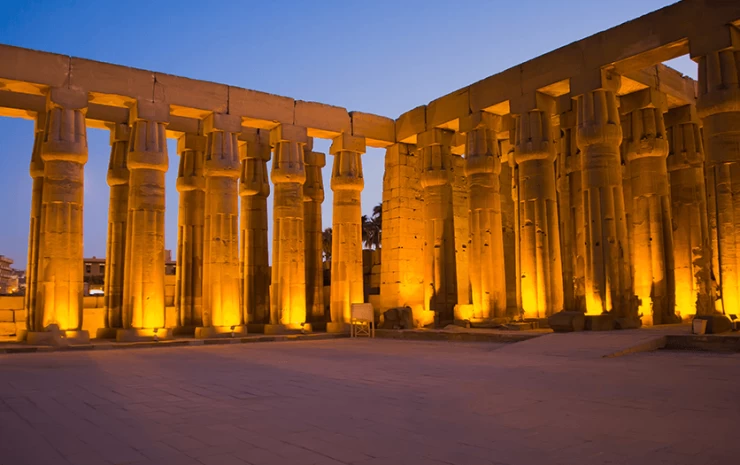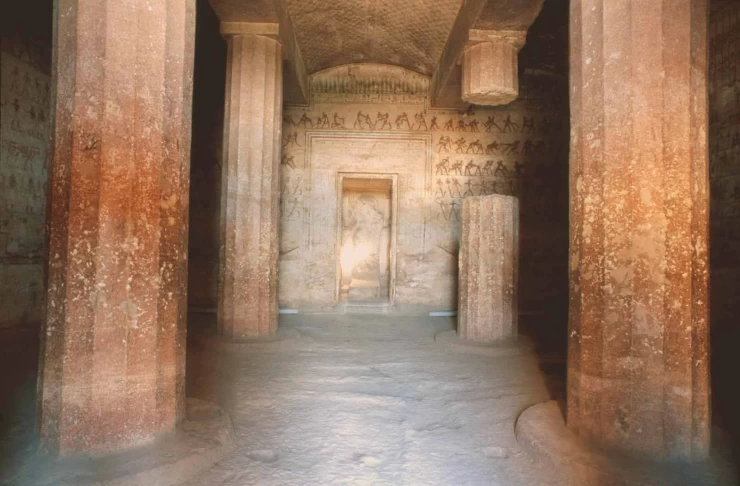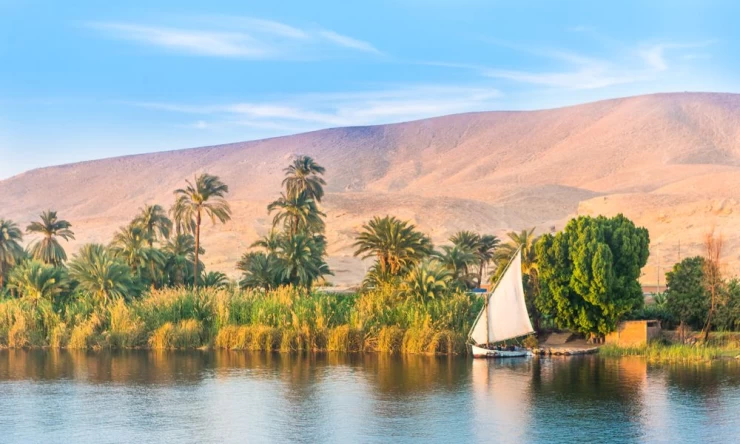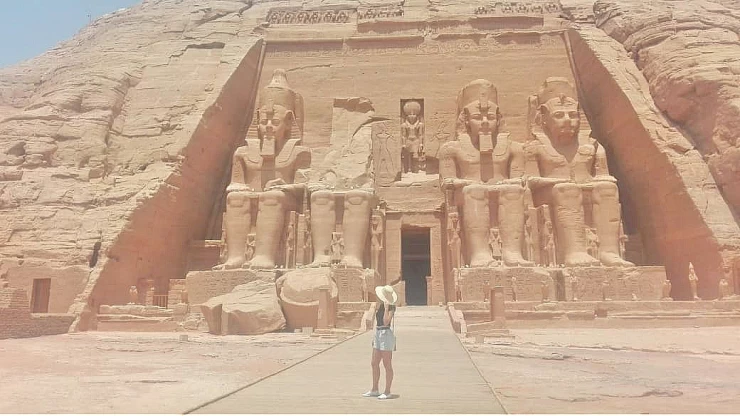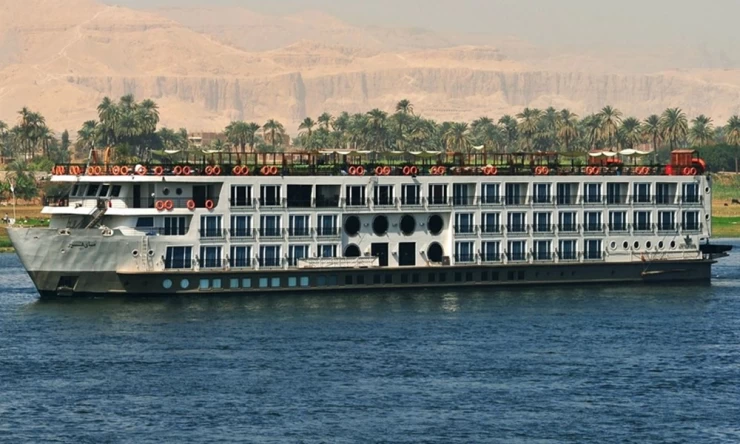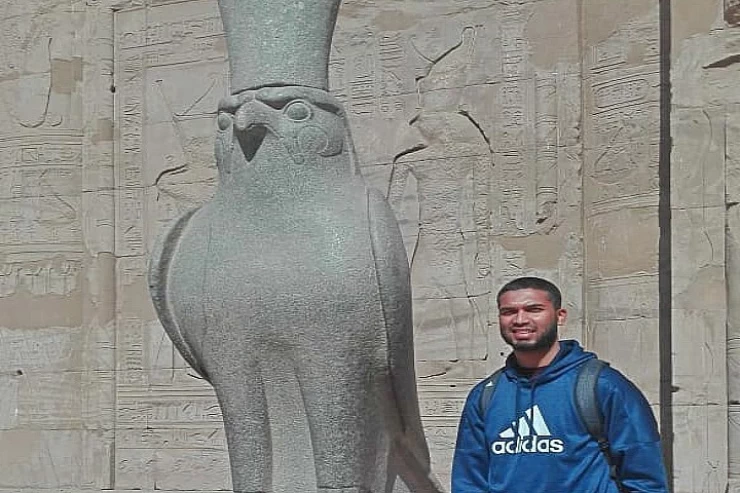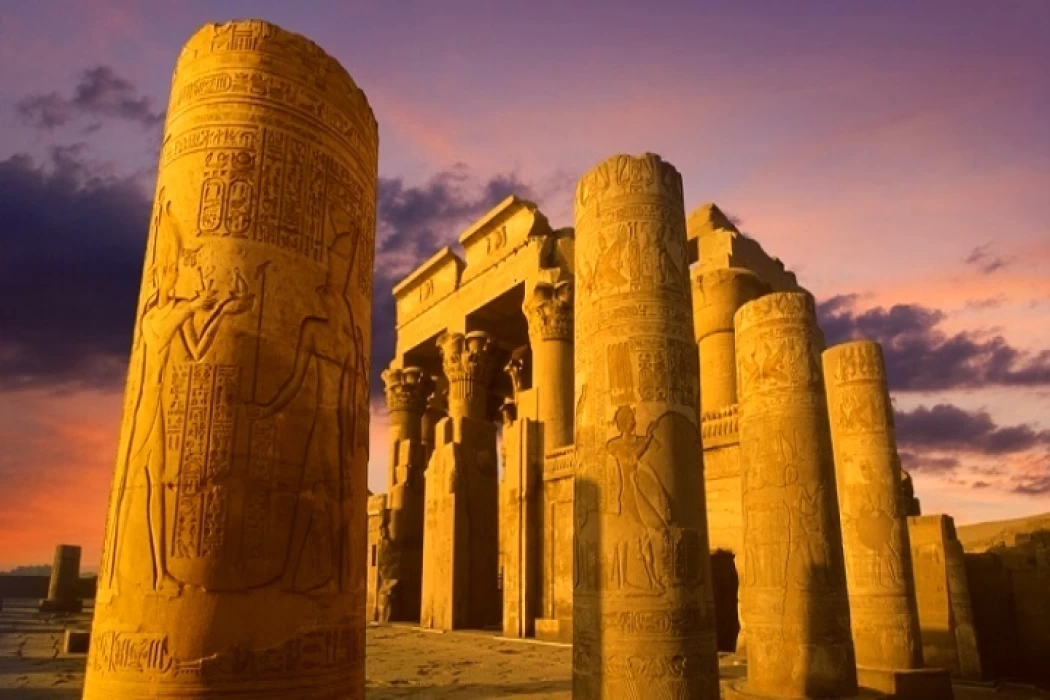
Aten Luxor | Lost golden city of Luxor
Excavations began in September 2020, and within weeks, formations of mud bricks began to unfold in all directions, and the mission’s astonishment was great when it was discovered that the site is a large city in a good state of preservation, with almost complete walls, and rooms full of life tools. daily, and the archaeological layers have remained unchanged for thousands of years, and the ancient inhabitants left them as if they were yesterday, according to the statement.
And the discovery of this city not only gave a rare glimpse into the life of the ancient Egyptians in the era of the empire but also helped shed light on one of the greatest mysteries in history and the reason for Akhenaten and Nefertiti's decision to move to Amarna, according to the statement.
The statement indicated that the excavation area is located between the Temple of Ramesses III in Medinet Habu and the Temple of Amenhotep III in Memnon. The Egyptian mission began working in this area in search of the mortuary temple of Tutankhamun, and it was King Ay, the successor of Tutankhamun, who built his temple on a site that was later adjacent on its southern side to the temple of Ramesses III in Medinet Habu.
The first objective of the mission was to determine the history of this city, as hieroglyphic inscriptions were found on ceramic lids for wine vessels. Historical references indicate that the city consisted of 3 royal palaces of King Amenhotep III, in addition to the administrative and industrial center of the empire.
A large number of archaeological discoveries confirmed the history of the city, such as rings, scarabs, colored pottery vessels, and mud bricks bearing the seals of the cartouche of King Amenhotep III. After only 7 months of excavations, several areas or neighborhoods were discovered in that city.
In the southern part, the Egyptian mission found the bakery, the cooking area, and food preparation areas complete with ovens and pottery storage utensils, an area that served a large number of workers and employees.
As for the second area, which was partially revealed, it represents the administrative and residential district, as it includes larger and well-organized units. This area is fenced with a zigzag wall, with only one entry point leading to internal corridors and residential areas. It is believed that the single entrance served as a kind of security feature, being able to control entry and exit to enclosed areas.
Zigzag walls are among the rare architectural elements in ancient Egyptian architecture and were mainly used at the end of the Eighteenth Dynasty.
The third area, is the workshop, as it includes on one of its sides the area for producing mud bricks used to build temples and accessories, and the bricks contain seals bearing the cartouches of King Amenhotep III, "Neb-Maat-Ra". Also, a large number of casting molds for the production of amulets and decorative elements were discovered, which constitutes further evidence of the wide activity in the city, to produce decorations for both temples and tombs.
The mission also found many tools used in industrial activity, such as spinning and weaving, throughout the excavation areas. Scraps of metal and glass have also been discovered, but the main area for such activity has yet to be explored.
Two unusual burials of a cow or bull were found inside one of the rooms, and research is still underway to determine the nature and purpose of these burials.
Also found was a wonderful burial of a person with his arms outstretched at his side, and the remains of a rope wrapped around his knees. The location and position of this skeleton are rather strange, and there is more research on this matter.
A pot containing two gallons of dried or boiled meat was also found, bearing valuable inscriptions that can be read: "Year 37, boiled meat for Valentine's Day of the third dam from the butchery of Kha'a barn made by the butcher Ewi." The mission also found a text inscribed on a seal print that reads: "Jem-ba-Aten", meaning the province of the Shining Aton, which is the name of a temple built by King Akhenaten in Karnak.
A large cemetery was also discovered, the extent of which has not yet been determined, and the mission discovered a group of tombs carved into rocks of different sizes, which can be accessed through stairs carved into the rock, and there is a common feature of building tombs in the Valley of the Kings and the Valley of the Nobles.
Ongoing excavations are giving archaeologists access to the city's original activity layer, where information has been uncovered that will change history and give unique insights into Tutankhamun's family. The discovery of the lost city will also provide a deeper understanding of the daily lives of the ancient Egyptians in terms of building style, home decorations, the tools they used, and how work was organized.
the famous Pharaohs can be explored shortly in the valley of kings through Luxor day tours also if you can board the train for a couple of hours north you can also cover it during Aswan day tours or even our 2 days tour to Luxor from Aswan there are a lot of Egypt day tours that go to Luxor from the various Egyptian cities like Hurgada day tours by land to Luxor or if you come for a leisurely holiday in Sharm you can take the plane for one day during Sharm El Sheikh excursions to explore all of the historical city.
There is a really cool museum in Aswan called The The Nile Museum. It's a special place where you can learn about how people lived a long time ago in Egypt. You can even pretend to be there and see all the amazing things they had back then.
Latest Articles
Admin
Seabourn Sojourn Cruise Stops in Safaga Port
The Seabourn Sojourn, the flagship vessel of Seabourn Cruise Line's ultra-luxury fleet, was built in 2008 at the T. Mariotti shipyard in Genoa, Italy. Measuring 198 metres, it can accommodate up to 450 guests in its 225 spacious all-suite staterooms.
Admin
Norwegian Sky Cruise Stops in Safaga Port
Norwegian Cruise Line operates a cruise ship called the Norwegian Sky. It was constructed in 1999 and can accommodate 2,004 passengers in addition to 878 crew members. The ship has several dining establishments, lounges and bars, a spa and fitness center, swimming pools, and a number of entertainment areas.
Admin
Explora II Cruise Stops in Safaga Port
Explora II, the second vessel in the Explora Journeys fleet, sets sail in 2024 to redefine luxury cruising. With 461 ocean-front suites, 9 culinary experiences, and 4 pools, this haven of sophistication and sustainability promises an unforgettable "Ocean State of Mind" journey to inspiring destinations.
Admin
Mein Schiff 6 Cruise Stops in Safaga Port
The Mein Schiff 6 is the latest cruise ship in the renowned TUI Cruises fleet, offering passengers a luxurious and sophisticated cruise experience. At 315 metres long, this floating resort features a range of dining options, entertainment, and recreational facilities, including a spa, fitness centre, and sports amenities.
Admin
Mein Schiff 4 Cruise Stops in Safaga Port
When the Mein Schiff 4 cruise ship docks in Safaga, Egypt, passengers are granted access to a realm of ancient wonders. Aboard this state-of-the-art vessel, guests can embark on meticulously curated shore excursions that showcase the region's most iconic landmarks, including the Giza Pyramids, the enigmatic Sphinx, and the remarkable tombs and temples of the Valley of the Kings in Luxor.
Admin
MS Europa Cruise Stops in Safaga Port
The Silver Moon, Silversea's latest flagship, is a luxury cruise ship that offers an exceptional travel experience for Venezuelans exploring Egypt. With a capacity of 596 guests and an impressive 40,700 gross tonnes, the Silver Moon maintains the small-ship intimacy and spacious all-suite accommodations that are the hallmarks of the Silversea brand.






